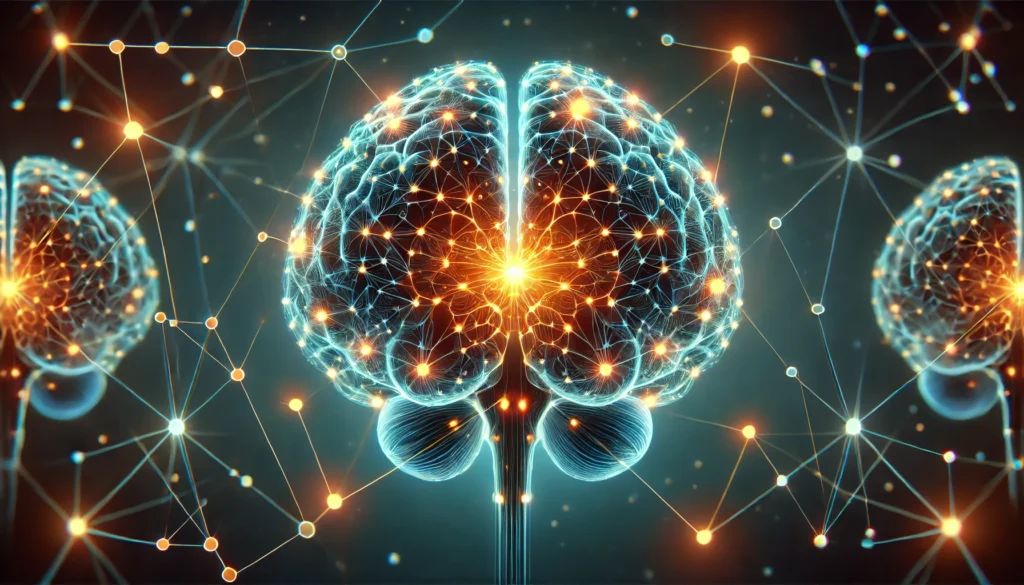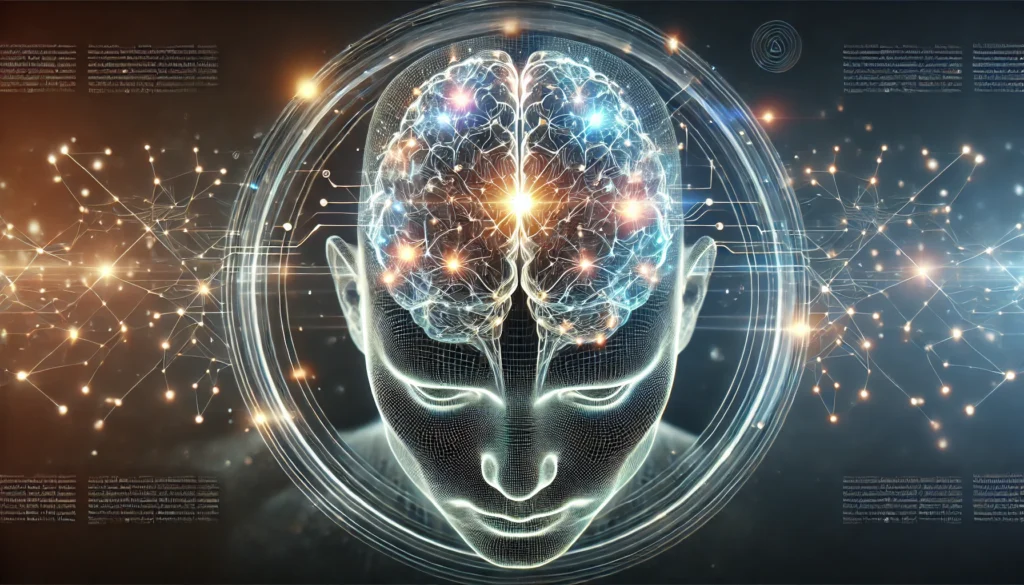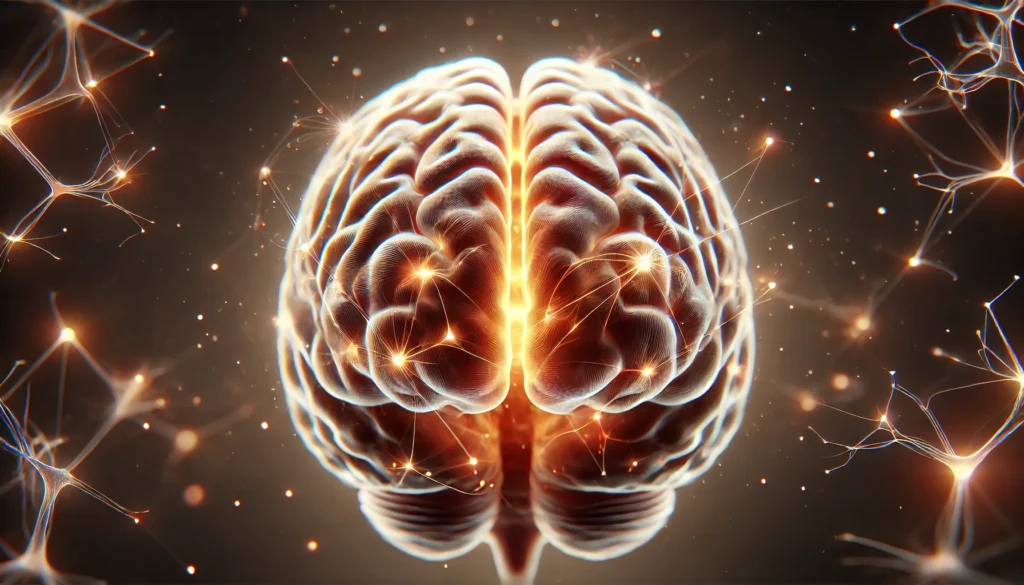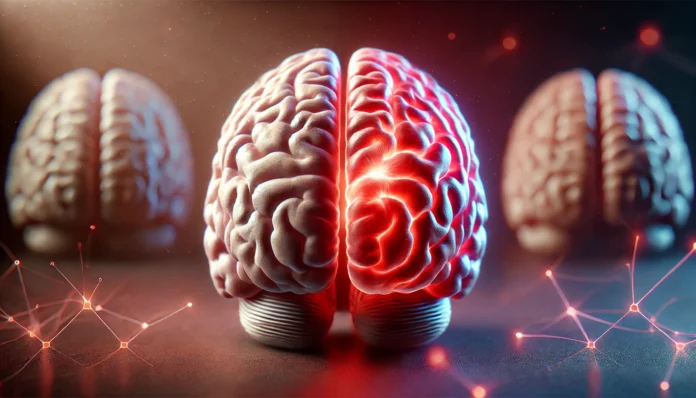Understanding the intricate landscape of the human brain is one of the most compelling pursuits in neuroscience, particularly when it comes to the emotional mechanisms that shape our daily experiences. Emotions are not abstract or ethereal—they are deeply rooted in specific neural circuits and biochemical processes that influence everything from decision-making to physical health. Among these, the amygdala plays a pivotal role, acting as a neurological epicenter for emotional regulation, perception, and memory. For those seeking to optimize brain health and extend longevity, it is essential to understand what part of the brain controls emotions and feelings, and how the amygdala interacts with broader neural systems to shape our psychological and physiological well-being.
You may also like : Best Things for Brain Health: Expert-Backed Strategies to Keep Your Mind Sharp
Emotions, Longevity, and the Brain-Body Connection
Before we dive into the emotional core of the brain, it’s critical to appreciate why emotions matter so deeply in the context of health and aging. Emotions are not merely fleeting states of mind; they directly influence cardiovascular health, immune system resilience, cognitive clarity, and overall life expectancy. Chronic stress, unresolved trauma, and mood disorders such as depression or anxiety can accelerate aging, increase disease risk, and reduce lifespan. On the flip side, emotional resilience, positive affect, and emotional intelligence have been consistently linked to improved brain function, neuroplasticity, and healthy aging. This connection underscores the importance of identifying the part of the brain which controls emotions and the pathways that allow us to regulate them effectively.
The Amygdala: The Brain’s Emotional Sentinel
At the center of emotional processing lies the amygdala, an almond-shaped cluster of nuclei located deep within the temporal lobes. The amygdala’s location in the brain is adjacent to the hippocampus, another essential structure involved in memory and learning. Its anatomical positioning enables it to act as a rapid-response system to emotionally salient stimuli, especially those involving fear, anger, or pleasure. This responsiveness is what allows the amygdala to evaluate environmental cues and initiate appropriate behavioral responses, such as fight-or-flight reactions or emotional bonding.
For decades, scientists have been exploring the emotion part of brain function in real-time using brain imaging techniques such as fMRI and PET scans. These scans repeatedly show heightened amygdala activity when subjects are exposed to emotionally charged stimuli, particularly those that involve threat perception. Understanding what part of the brain controls emotions and feelings is impossible without acknowledging the central role of the amygdala, whose neural pathways connect to multiple other regions including the prefrontal cortex, thalamus, and brainstem. These connections form a sophisticated network responsible for interpreting, reacting to, and regulating emotional experiences.

Amygdala Function: From Fear to Empathy
While the amygdala is popularly known for its role in fear response, its emotional repertoire is far more nuanced. This section of brain that controls emotions processes not only fear but also a wide range of emotions including aggression, pleasure, sadness, and empathy. In social mammals, including humans, the amygdala is especially important for recognizing facial expressions, interpreting social cues, and generating empathy. Damage to this region has been shown to impair one’s ability to detect trustworthiness or to differentiate between benign and threatening stimuli.
One fascinating study found that individuals with lesions in the amygdala showed diminished responses to fear-inducing images, suggesting that the emotional salience of environmental stimuli depends heavily on this structure. However, other research indicates that the amygdala is also involved in positive emotional processing. When participants were shown images of loved ones or happy memories, the amygdala lit up alongside the brain’s reward circuitry. This dual capacity indicates that the part of the brain which controls emotions is not a binary fear detector, but a dynamic processor of emotional valence, context, and intensity.
Neural Pathways: The Amygdala and Emotional Regulation
Emotional responses do not occur in a vacuum. The amygdala operates within a complex circuit involving several other brain regions that work in harmony or conflict depending on internal and external demands. Most notably, the prefrontal cortex plays a critical role in modulating amygdala activity, acting as the seat of reason, judgment, and impulse control. When the prefrontal cortex is functioning optimally, it can downregulate exaggerated responses from the amygdala, enabling more rational and socially appropriate behavior.
This interaction is crucial for understanding what part of brain does emotions and how those emotional outputs are filtered through layers of higher cognition. For example, when a person is startled by a loud noise, the amygdala may initially trigger a fear response. But almost immediately, the prefrontal cortex evaluates the situation: Was it a real threat or just a door slamming? If the latter, the fear response is quickly dampened. This feedback loop between emotion and cognition is central to emotional intelligence, stress resilience, and even interpersonal relationships. Disruptions in this loop, such as those seen in PTSD or certain mood disorders, can lead to disproportionate emotional reactions and impaired social functioning.
The Hippocampus: Emotional Memory and Context
Adjacent to the amygdala lies the hippocampus, a structure long known for its role in memory consolidation. However, the hippocampus also plays a vital supporting role in emotional processing by providing contextual information that shapes emotional responses. When asking what part of the brain controls emotions and feelings, one cannot overlook how the hippocampus helps anchor those feelings in time and space. For instance, the difference between a healthy fear response and pathological anxiety often hinges on the brain’s ability to contextualize threat.
The amygdala may sound the alarm when a stimulus resembles a past trauma, but without the hippocampus’ contextual input, the brain cannot accurately determine whether the current situation is actually dangerous. This miscommunication is a hallmark of disorders like generalized anxiety or panic attacks, where benign stimuli trigger overwhelming fear responses. Enhancing hippocampal function through mindfulness, neurofeedback, or cognitive-behavioral therapy can improve this feedback loop, helping the brain recalibrate its emotional responses to better reflect present reality.

Emotion, Longevity, and the Stress Response
The interplay between the amygdala and other brain regions doesn’t just determine how we feel—it significantly influences how we age. Chronic activation of the amygdala due to unregulated stress can set off a cascade of physiological effects that accelerate biological aging. The hormone cortisol, released during stress, impacts everything from immune function to DNA integrity. When stress becomes chronic, elevated cortisol levels shrink the hippocampus, impair prefrontal cortex function, and increase systemic inflammation.
Understanding what part of the brain controls emotions and feelings gives us a roadmap for mitigating the health risks associated with emotional dysregulation. Stress-management strategies such as mindfulness meditation, cognitive reframing, and even targeted pharmacological interventions can help normalize amygdala activity and reduce its detrimental impact on longevity. Emotional mastery, in this context, is not just a psychological asset but a cornerstone of anti-aging medicine.
Developmental Trajectories and Emotional Brain Maturation
Emotional control does not develop uniformly across the lifespan. In children and adolescents, the amygdala tends to mature earlier than the prefrontal cortex, resulting in heightened emotional reactivity and impulsive behavior. This developmental mismatch explains why teenagers often experience emotional highs and lows with more intensity than adults. It also highlights the importance of scaffolding emotional regulation through parental modeling, education, and supportive social environments.
As the brain matures, connectivity between the amygdala and the prefrontal cortex strengthens, enabling more nuanced emotional responses. This maturation process is not entirely automatic—it can be enhanced or hindered by environmental factors, trauma, substance use, and lifestyle choices. Therefore, interventions aimed at strengthening the emotion part of brain circuitry should ideally begin in adolescence and continue into adulthood as part of a comprehensive brain health strategy.
Neuroplasticity and Emotional Rewiring
One of the most hopeful discoveries in neuroscience is the brain’s capacity for neuroplasticity—the ability to reorganize and form new neural connections throughout life. This adaptability means that even deeply entrenched emotional patterns can be reshaped through deliberate practice, therapeutic intervention, and lifestyle modification. The amygdala, like other brain structures, responds to repeated experiences. If those experiences are infused with mindfulness, compassion, and emotional awareness, the neural pathways associated with emotional reactivity can be transformed into those promoting emotional balance and resilience.
Practices such as mindfulness meditation have been shown to reduce amygdala volume and increase functional connectivity with the prefrontal cortex. These structural changes correspond to decreased emotional reactivity and increased well-being. In essence, we can train the part of brain which controls emotions to work in greater harmony with systems responsible for judgment and self-awareness. This emotional rewiring is not just about feeling better; it is also about protecting the brain against degenerative conditions and enhancing overall longevity.
Pathological Amygdala Function: When Emotions Go Awry
While the amygdala is essential for healthy emotional functioning, it can also become hyperactive or underactive, leading to emotional disturbances. In anxiety disorders, for example, amygdala hyperactivity creates a persistent sense of threat, even in safe environments. In contrast, individuals with antisocial personality disorder often show reduced amygdala activity, correlating with diminished empathy and emotional responsiveness.
Understanding what part of brain does emotions is crucial for tailoring treatments to these diverse conditions. Pharmacological interventions such as SSRIs and anxiolytics often target amygdala pathways, aiming to modulate their output. Non-pharmacological strategies, including cognitive-behavioral therapy and exposure therapy, also rely on the brain’s ability to recondition emotional responses by altering the flow of information through the amygdala-prefrontal cortex loop. These therapeutic avenues are increasingly personalized, taking into account genetic, developmental, and environmental influences on the emotion part of brain systems.
The Amygdala and Emotional Intelligence
Emotional intelligence—the ability to recognize, understand, and manage emotions—is increasingly recognized as a critical determinant of success, health, and longevity. At the neurological level, emotional intelligence reflects the efficiency of communication between the amygdala and higher-order brain structures. When these networks function smoothly, individuals are better equipped to navigate social situations, resolve conflicts, and maintain psychological equilibrium.
Training emotional intelligence is not just a matter of personality development; it is a form of cognitive enhancement. Activities that improve self-awareness, empathy, and emotional regulation actively engage the emotion part of brain systems and promote neuroplasticity. Whether through journaling, coaching, or meditative practices, cultivating emotional intelligence directly influences the neural architecture responsible for emotional processing and ultimately contributes to a longer, healthier life.
Gender, Genetics, and Emotional Processing
While the fundamental architecture of the emotional brain is consistent across humans, subtle differences emerge based on gender and genetic makeup. Research shows that women generally exhibit greater amygdala activation in response to emotional stimuli, particularly those involving social or interpersonal content. Men, on the other hand, may show greater activation in regions associated with action or threat responses. These differences are not absolute but point to varied strategies in emotional processing and regulation.
Genetic variations, such as those affecting serotonin transport or oxytocin receptors, can also influence how the amygdala responds to emotional stimuli. These variations help explain why some individuals are more prone to anxiety, depression, or emotional dysregulation. Personalized approaches to emotional health that take these genetic predispositions into account are becoming more prevalent in neuropsychiatry and personalized medicine. This emerging field emphasizes that understanding what part of the brain controls emotions and feelings is only the beginning—the ultimate goal is to tailor interventions that align with each person’s unique neurobiological profile.
Harnessing Emotional Insights for Brain Health and Longevity
Optimizing emotional health is not merely about avoiding distress; it is about harnessing the brain’s emotional systems to foster growth, resilience, and long-term wellness. Lifestyle interventions that promote positive emotional states—such as gratitude practices, physical exercise, social connection, and cognitive training—have been shown to modulate amygdala activity and improve overall brain function. These practices do more than make us feel better in the moment—they recalibrate the neural circuitry that governs our entire physiological response to life.
Knowing what part of brain which controls emotions allows us to take a more proactive approach to mental health, moving beyond symptom management toward emotional mastery. This mastery is a key pillar of cognitive enhancement and anti-aging science, as it supports not only psychological flourishing but also neuroprotective mechanisms that delay or prevent cognitive decline.
A Future of Emotional and Neurological Integration
The frontier of brain health lies at the intersection of emotion and cognition, physiology and psychology, structure and function. As we deepen our understanding of the amygdala’s location in brain anatomy and its extensive neural partnerships, we gain valuable tools for crafting a healthier, longer, and more emotionally fulfilling life. Advances in neuroimaging, genetics, and biofeedback are helping to refine our map of the emotional brain, paving the way for interventions that are both precise and holistic.
The more we learn about the part of brain which controls emotions, the more evident it becomes that emotional health is not a luxury or an afterthought. It is a central determinant of vitality, longevity, and human flourishing. Our feelings are not fleeting distractions from rational thought; they are integral to the very fabric of consciousness and survival. By honoring the role of the amygdala and the broader emotion part of brain systems, we can better align our daily habits, medical interventions, and societal structures to support emotional well-being across the lifespan.
Frequently Asked Questions: Understanding the Emotional Brain and the Amygdala
1. How does emotional trauma in early life affect the brain regions responsible for emotions?
Early life trauma can profoundly influence the development of the section of brain that controls emotions, particularly the amygdala and prefrontal cortex. Repeated stress during critical developmental windows may cause the amygdala to become hyperactive, increasing sensitivity to future emotional stressors. This overactivity can disrupt communication with the prefrontal cortex, making it harder to regulate emotions in adulthood. Additionally, altered cortisol levels from chronic stress can impair the hippocampus, further disrupting emotional memory and contextual processing. While these impacts are serious, emerging therapeutic interventions—like trauma-informed mindfulness and EMDR—show promise in recalibrating these emotion part of brain circuits.
2. Can diet influence the function of the amygdala or emotional brain health?
Yes, nutrition plays a surprisingly significant role in modulating the part of brain which controls emotions. Diets rich in omega-3 fatty acids, flavonoids, and magnesium support neurogenesis and reduce inflammation in the amygdala and connected regions. Conversely, high-sugar or high-fat diets may contribute to amygdala dysregulation by promoting systemic inflammation and oxidative stress. Some studies even suggest that the Mediterranean diet may help stabilize activity in the section of brain that controls emotions. While no single food acts as a cure-all, sustained dietary patterns can positively influence emotional processing and resilience.
3. Are there technologies that allow us to visualize the emotion centers of the brain in real-time?
Recent advances in neuroimaging, including functional MRI (fMRI) and magnetoencephalography (MEG), enable real-time visualization of the emotion part of brain structures. These tools help researchers and clinicians assess how stimuli activate regions like the amygdala, providing insights into individual emotional responses. Biofeedback devices are also emerging that can indirectly track amygdala activity by monitoring heart rate variability and skin conductance. When paired with a brain diagram, amygdala function can be pinpointed and even targeted in neuromodulation therapies. These technologies offer promising avenues for personalizing treatments based on how the brain processes emotions in real-time.
4. What role does sleep play in regulating emotional centers of the brain?
Sleep is essential for restoring and recalibrating the section of brain that controls emotions. During REM sleep, the brain processes emotional memories, helping to desensitize the amygdala to previously stressful experiences. Sleep deprivation, on the other hand, causes heightened amygdala reactivity and weakens connectivity with the prefrontal cortex, impairing emotional regulation. Emerging research also shows that disrupted sleep patterns may shift baseline activity in the part of brain which controls emotions, predisposing individuals to mood disorders. Strategies such as sleep hygiene, chronotherapy, and melatonin regulation can directly benefit emotional balance through their effects on the brain.
5. How does social connection impact the emotion-regulating regions of the brain?
Social relationships are critical for maintaining the health of the emotion part of brain structures. Oxytocin, a neuropeptide released during positive social interactions, directly affects amygdala responsiveness and promotes feelings of safety and trust. People with robust social support tend to show more stable activity in the part of brain which controls emotions, especially when facing stress. Additionally, loneliness has been linked to increased amygdala activation and reduced prefrontal modulation, indicating that emotional dysregulation can result from social isolation. Enhancing social connection is therefore not just a psychological remedy—it has concrete neurobiological effects on emotional centers.
6. How do hormonal fluctuations affect emotional processing in the brain?
Hormonal changes—especially involving estrogen, progesterone, and cortisol—can significantly impact the section of brain that controls emotions. For instance, estrogen enhances connectivity between the amygdala and prefrontal cortex, potentially improving emotional regulation in phases of the menstrual cycle. Cortisol, a stress hormone, elevates amygdala activation and impairs memory-related regions, contributing to emotional volatility during stress. In menopausal or andropausal stages, hormonal declines may dysregulate the emotion part of brain networks, increasing susceptibility to anxiety or depression. Hormone replacement therapy and lifestyle adaptations may help stabilize this neural circuitry during transitional periods.
7. Is there a link between exercise and amygdala function?
Exercise has a well-documented effect on emotional brain health and specifically on the amygdala location in brain functioning. Aerobic exercise promotes neurogenesis and reduces systemic inflammation, which can modulate hyperactive emotional responses. Regular physical activity has been shown to decrease baseline amygdala activity and improve its functional connectivity with the prefrontal cortex. Moreover, mind-body practices like yoga and tai chi engage the parasympathetic nervous system, enhancing balance within the part of brain which controls emotions. Incorporating movement into daily routines is a simple but powerful strategy for promoting long-term emotional regulation.
8. What happens to emotional brain centers during chronic anxiety or depression?
In chronic anxiety or depression, the part of brain which controls emotions becomes dysregulated, leading to persistent emotional distress. The amygdala often shows hyperactivity, interpreting neutral stimuli as threatening, while the prefrontal cortex may show reduced inhibitory control. In depression, decreased hippocampal volume and altered neurotransmitter activity further distort emotional memory and motivation. Advanced imaging of the amygdala location in brain scans of affected individuals shows less dynamic response to positive stimuli and heightened sensitivity to negative ones. This neural imbalance can often be restored with integrative treatment approaches that combine psychotherapy, medication, and neurofeedback.
9. How can children’s emotional brains be nurtured for lifelong emotional resilience? Supporting the development of the emotion part of brain during childhood is vital for long-term mental health. Environments rich in emotional safety, attunement, and validation enhance the connectivity between the amygdala and prefrontal regions. Creative play, secure attachment, and age-appropriate emotional coaching strengthen the section of brain that controls emotions and improve its regulatory capacity. Interactive brain diagram amygdala activities can even be used in classrooms to help children visualize and understand their emotional responses. Early interventions that support brain plasticity lay a foundation for emotional intelligence that can last a lifetime.
10. Are there emerging therapies that directly target emotional brain centers like the amygdala?
Yes, several promising interventions are being developed to target the amygdala and related emotional brain centers with increasing precision. Transcranial magnetic stimulation (TMS) and focused ultrasound can modulate the amygdala location in brain networks without invasive surgery. Neurofeedback therapies train individuals to consciously alter brainwave patterns associated with emotional states. Psychedelic-assisted psychotherapy is also under investigation for its ability to reset emotional circuits by disrupting maladaptive activity in the part of brain which controls emotions. These innovative treatments, grounded in neuroscience, offer new hope for addressing emotional dysregulation in resistant or treatment-refractory conditions.

Conclusion: Elevating Emotional Awareness for Lifelong Brain Health
The journey to understanding what part of the brain controls emotions and feelings ultimately leads us deep into the heart of human experience. The amygdala, though small in size, wields immense influence over how we perceive, interpret, and respond to the world. Its interplay with the prefrontal cortex, hippocampus, and broader neural networks forms the foundation of our emotional lives. This network does not operate in isolation; it is shaped continuously by our choices, relationships, environments, and inner narratives.
For those invested in brain health and longevity, cultivating emotional awareness is not an optional enhancement—it is an essential strategy. Supporting the brain’s emotional systems through targeted interventions, enriched environments, and mindful practices can yield profound benefits in resilience, cognitive capacity, and lifespan extension. As science continues to uncover the secrets of the emotion part of brain function, one truth stands clear: to thrive mentally, emotionally, and physically, we must nurture the neural roots of feeling itself.
By integrating this knowledge into clinical practice, public health policy, and personal wellness routines, we can foster a future where emotional intelligence and neurological well-being go hand in hand. And in doing so, we don’t just understand the brain better—we become better equipped to live fuller, healthier lives guided by emotional wisdom and neural harmony.
emotional regulation neuroscience, limbic system functions, brain regions and emotion, neurobiology of feelings, brain health and stress, neural circuits of emotion, emotional intelligence neuroscience, prefrontal cortex and emotion, stress and brain aging, fear response in the brain, hippocampus and emotional memory, brain-based emotional resilience, neurological effects of trauma, cortisol and brain function, emotional brain development, neuroplasticity and emotion, psychological resilience brain science, mental health and longevity, emotional processing in the brain, cognitive-emotional integration
Further Reading:
The Brain Science of Emotions and How to Control Them
The Role of Amygdala in Emotions & Memory
Understanding Emotions: Origins and Roles of the Amygdala
Disclaimer
The information contained in this article is provided for general informational purposes only and is not intended to serve as medical, legal, or professional advice. While Health11News strives to present accurate, up-to-date, and reliable content, no warranty or guarantee, expressed or implied, is made regarding the completeness, accuracy, or adequacy of the information provided. Readers are strongly advised to seek the guidance of a qualified healthcare provider or other relevant professionals before acting on any information contained in this article. Health11News, its authors, editors, and contributors expressly disclaim any liability for any damages, losses, or consequences arising directly or indirectly from the use, interpretation, or reliance on any information presented herein. The views and opinions expressed in this article are those of the author(s) and do not necessarily reflect the official policies or positions of Health11News.


